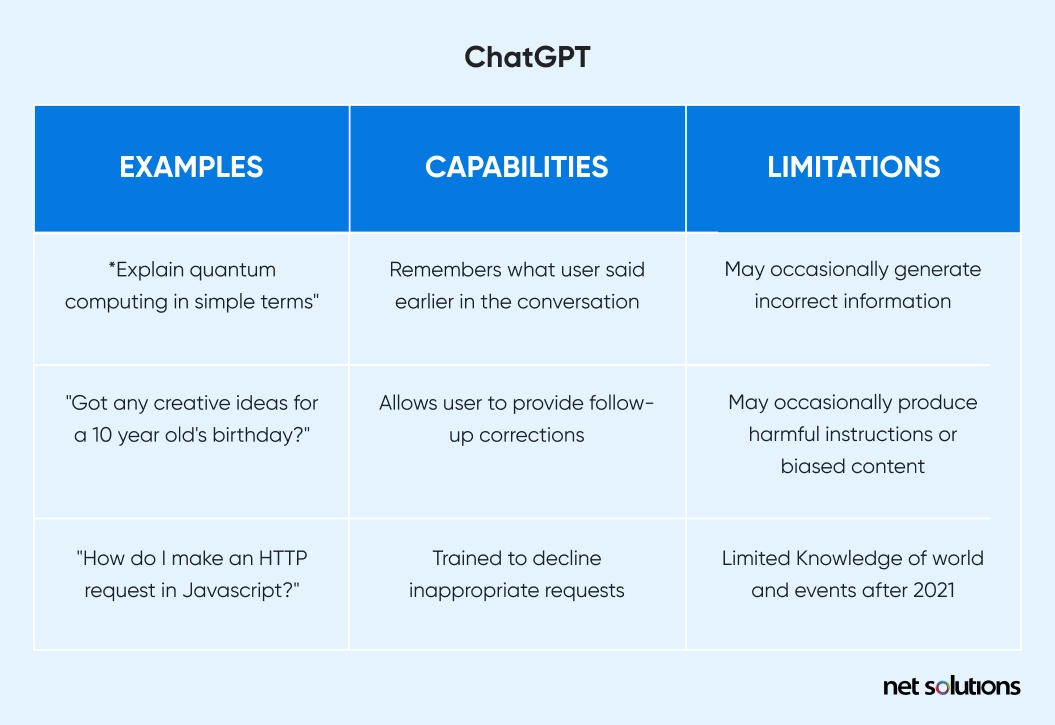YOUTUBE CHANNEL
CLICK HERE
Introduction
In the ever-evolving landscape of artificial intelligence, one technology that has captured the imagination of researchers, developers, and enthusiasts alike is ChatGPT. This revolutionary model, developed by OpenAI, represents a significant step forward in the realm of conversational AI. In this comprehensive guide, we will delve deep into the world of ChatGPT, explaining its origins, capabilities, applications, potential impact, and much more.
Chapter 1: The Genesis of ChatGPT
1.1. Artificial Intelligence and Natural Language Processing (NLP)
Artificial intelligence (AI) has made remarkable progress in recent years, particularly in the field of natural language processing (NLP). NLP focuses on enabling machines to understand, generate, and interact with human language. It has paved the way for various applications like chatbots, virtual assistants, and language translation.
1.2. Introduction to GPT (Generative Pre-trained Transformer)
Before delving into ChatGPT specifically, it's essential to understand its predecessor, the Generative Pre-trained Transformer (GPT). GPT is a type of AI model that excels at understanding and generating human-like text. It gained fame for its ability to generate coherent and contextually relevant text.
1.3. The Evolution of GPT Models
The GPT series of models has evolved over time, with each iteration building upon the previous one. Starting with GPT-1, the models became progressively more capable of understanding and generating human-like text. GPT-2, in particular, raised concerns about its potential misuse due to its advanced text generation capabilities.
1.4. OpenAI's Approach to Ethical AI
OpenAI, the organization behind ChatGPT, has a strong commitment to ethical AI development. They took a responsible approach by initially withholding the release of GPT-2 over concerns of misuse, demonstrating their commitment to addressing potential ethical issues.
Chapter 2: Introducing ChatGPT
2.1. The Birth of ChatGPT
ChatGPT represents the next evolutionary step in conversational AI. It is based on OpenAI's GPT-3 architecture and was released as a powerful language model capable of engaging in natural, human-like conversations.
2.2. Key Features of ChatGPT
ChatGPT is characterized by its ability to perform a wide range of language-related tasks, including text generation, translation, summarization, and more. It can hold context over long conversations, making it a versatile tool for various applications.
2.3. ChatGPT's Training Data
ChatGPT is trained on a massive corpus of text from the internet, giving it a broad understanding of diverse topics, languages, and writing styles. This extensive training data contributes to its impressive performance.
Chapter 3: How ChatGPT Works
3.1. The Transformer Architecture
At the core of ChatGPT's functionality lies the Transformer architecture, which allows it to process and generate text in a highly efficient manner. The architecture comprises layers of self-attention mechanisms and feedforward neural networks.
3.2. Pre-training and Fine-tuning
ChatGPT undergoes a two-step training process: pre-training and fine-tuning. During pre-training, it learns from a vast amount of text data. Fine-tuning is the stage where the model is tailored for specific tasks, such as conversation or translation.
3.3. The Magic of Attention Mechanisms
Understanding the attention mechanisms within ChatGPT is crucial. These mechanisms allow the model to focus on relevant parts of the input text when generating responses, resulting in coherent and contextually appropriate replies.
Chapter 4: Applications of ChatGPT
4.1. Chatbots and Virtual Assistants
One of the primary applications of ChatGPT is in the development of chatbots and virtual assistants. Its ability to engage in natural conversations makes it a valuable tool for businesses and customer service.
4.2. Content Generation
Content creators and marketers can leverage ChatGPT to generate blog posts, articles, product descriptions, and other textual content. It can provide inspiration, outline ideas, and even draft entire pieces of content.
4.3. Language Translation
ChatGPT's multilingual capabilities make it a powerful tool for language translation. It can translate text from one language to another with impressive accuracy.
4.4. Text Summarization
Researchers and professionals can use ChatGPT for text summarization tasks. It can read lengthy documents and provide concise summaries, saving time and effort.
4.5. Education and Learning
ChatGPT can serve as a virtual tutor, helping students understand complex topics and providing explanations in a conversational manner. It has the potential to revolutionize online learning.
Chapter 5: Challenges and Ethical Considerations
5.1. Bias and Fairness
One of the significant challenges with AI models like ChatGPT is the potential for bias in their responses. The model can inadvertently generate biased or offensive content, highlighting the importance of responsible AI development.
5.2. Misuse and Misinformation
As with previous GPT models, ChatGPT could be misused to generate fake news, misleading information, or harmful content. OpenAI is actively working on addressing these concerns.
5.3. Privacy and Data Security
Using ChatGPT for various applications raises concerns about data privacy and security. It's essential to handle sensitive information carefully when integrating AI models into systems.
Chapter 6: The Future of ChatGPT
6.1. Ongoing Research and Development
OpenAI is continuously researching and developing new versions of ChatGPT. Future iterations are expected to be even more powerful, addressing current limitations and ethical concerns.
6.2. Integration into Everyday Life
ChatGPT has the potential to become an integral part of our daily lives, assisting with tasks ranging from answering questions to providing companionship for individuals.
6.3. AI Ethics and Regulations
The growing influence of AI models like ChatGPT will necessitate the development of robust ethical guidelines and regulations to ensure responsible and safe usage.
Conclusion
In conclusion, ChatGPT represents a groundbreaking advancement in conversational AI, with its potential applications spanning across various fields. Understanding its origins, workings, capabilities, and ethical considerations is essential for harnessing its power responsibly. As we move forward, the evolution of ChatGPT and other AI models promises to shape the future of human-machine interactions, transforming the way we work, learn, and communicate.







Great
ReplyDelete